Plants with purple blooms are a favorite of many gardeners, probably because of the soothing effect of this color and the striking combinations it can possibly make.
Pairing different shades of violet, lavender, and purple flowers with pink and white flowers will give an elegant and classic look to your garden.
While combining them with other varieties of colors such as acid green, red, or orange will create a bright and colorful display.
Purple flowers are not only colorful flowers but are also well-loved by pollinators, so they will attract helpful bees and butterflies to your garden.
- Related article: Houseplant Guides
In this article, we will look at some of the most stunning plants with purple blooms that you can grow!
1. Midnight Blue Rose (Rosa ‘Midnight Blue’)
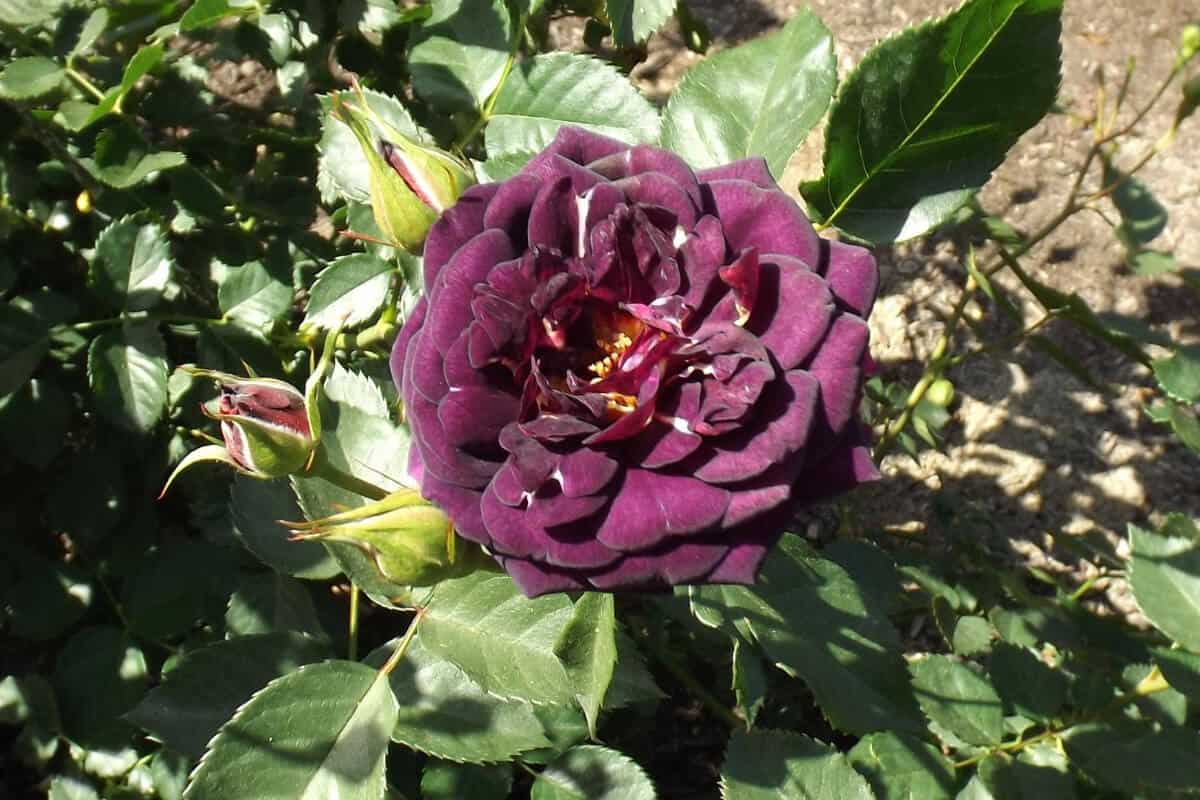
Despite their name, Midnight Blue Roses are actually purple-black in color, with the top of the petals darker than the base.
These velvety dark flowers have a rich fragrance, reminiscent of cloves.
Like most other roses, they have thorns, but not too many.
Midnight Blue Roses can delight you with several flowerings throughout the warm season if taken care of properly.
2. Rhapsody in Blue Rose (Rosa ‘Rhapsody in Blue’)
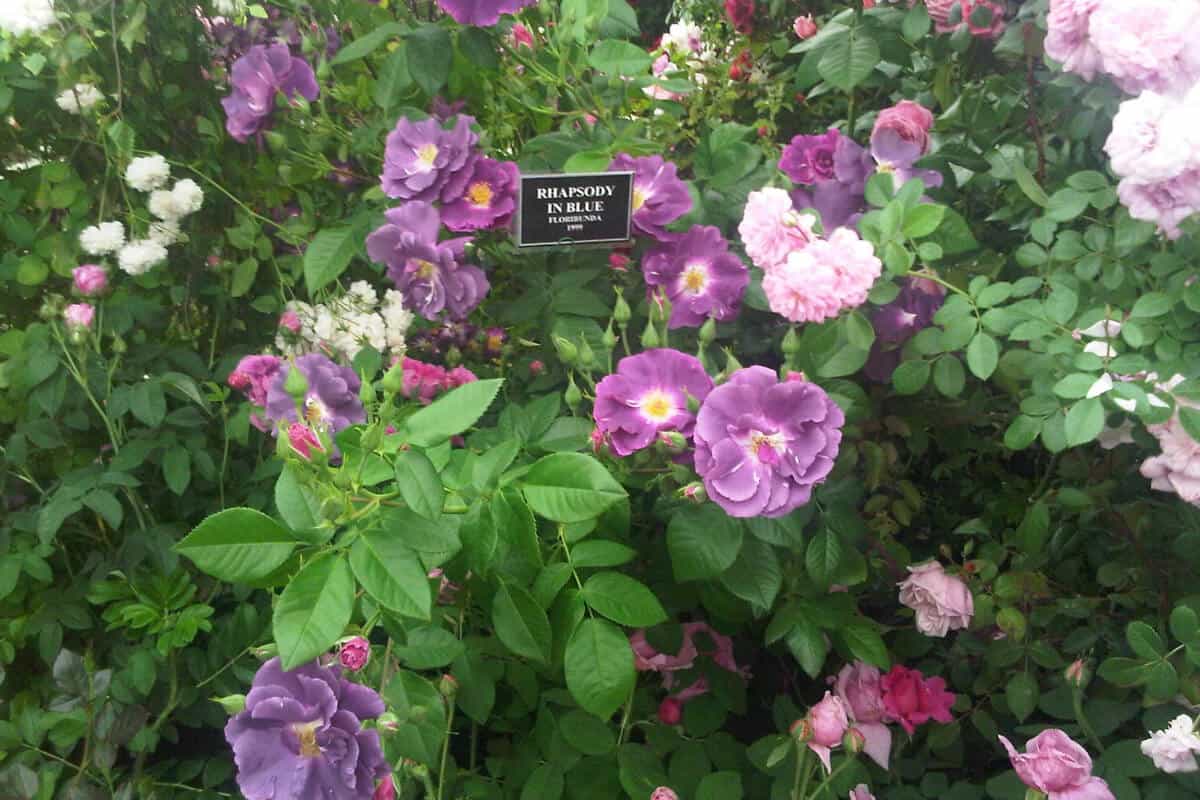
The Rhapsody in Blue cultivar is also quite striking, with its vivid purple flowers that fade to blue over time.
The roses bloom both during the summer months and the fall and have a characteristic citrusy fragrance. It’s advisable to deadhead them to allow new production.
Rhapsody in Blue Rose needs full sun and rich soil to thrive, but it can amazingly adapt to a wide range of conditions.
3. Petunia (Petunia x Hybrida)
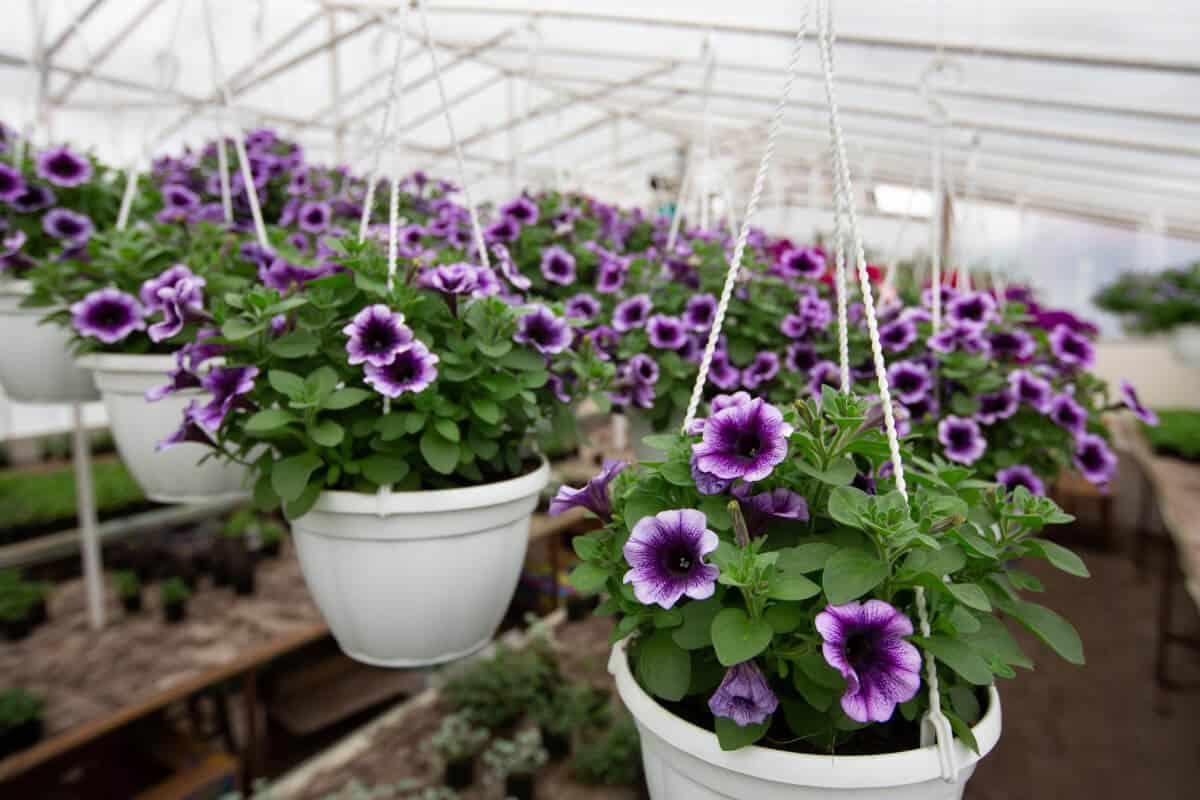
Petunias belong to the nightshade family and are some of the most popular bedding plants. They have a long flowering period, from May until the first frost.
In order to keep them blooming, you will need to provide them with plenty of sun and water. Petunias do well even on poor soils, but they should be kept indoors during the winter.
It has colorful flowers that come in many shapes, with some that are striped or with heart-shaped, variegated leaves and patterns on the petals.
4. May Night Sage (Salvia x Sylvestris ‘May Night’)
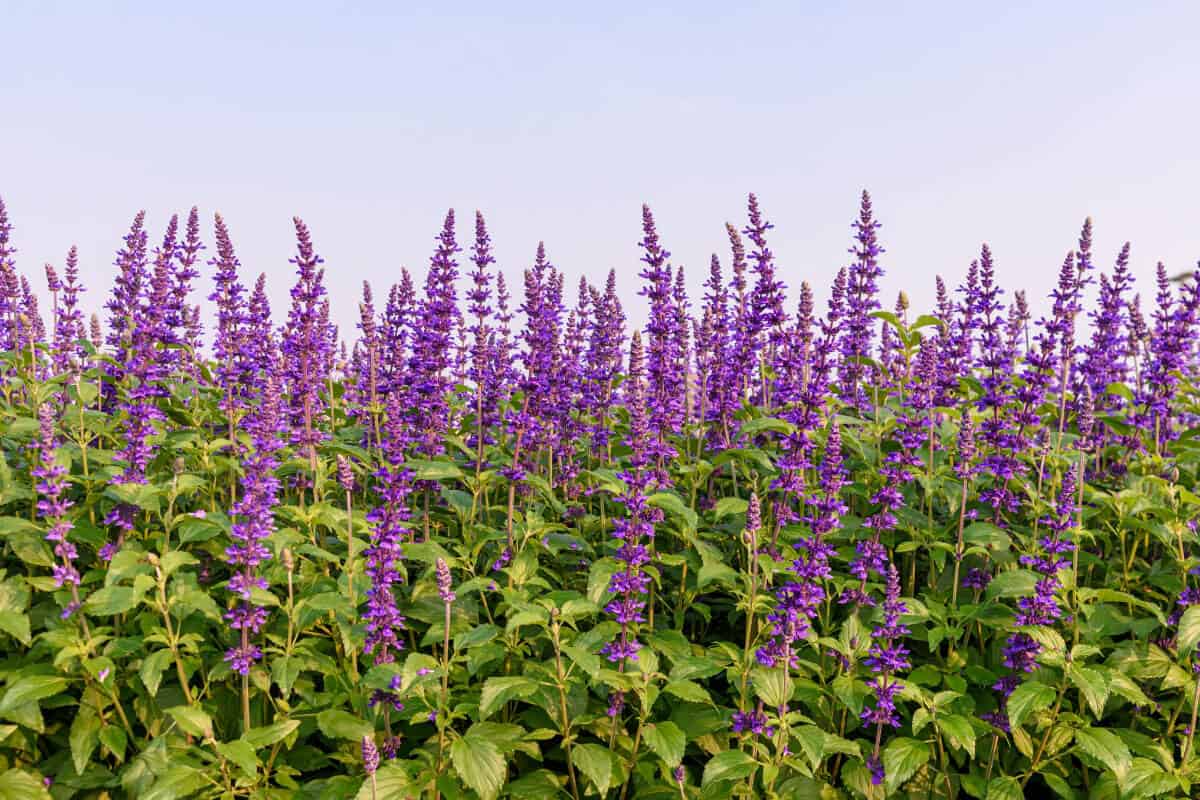
May Night Sage is a hardy perennial and is well-loved because of its deep shade of purple-blue flowers.
It’s very resistant to cold, tolerates clay soils, and thrives in hot and sunny areas.
This Sage can bloom twice a year: once in May until June, and then later in the summer if deadheaded, again.
May Night Sage has a compact growth habit and reaches just 2 feet tall.
Additionally, It can provide a pleasing contrast if paired with lavender, other Sages, and Echinacea.
5. Caradonna Sage (Salvia nemorosa ‘Caradonna’)
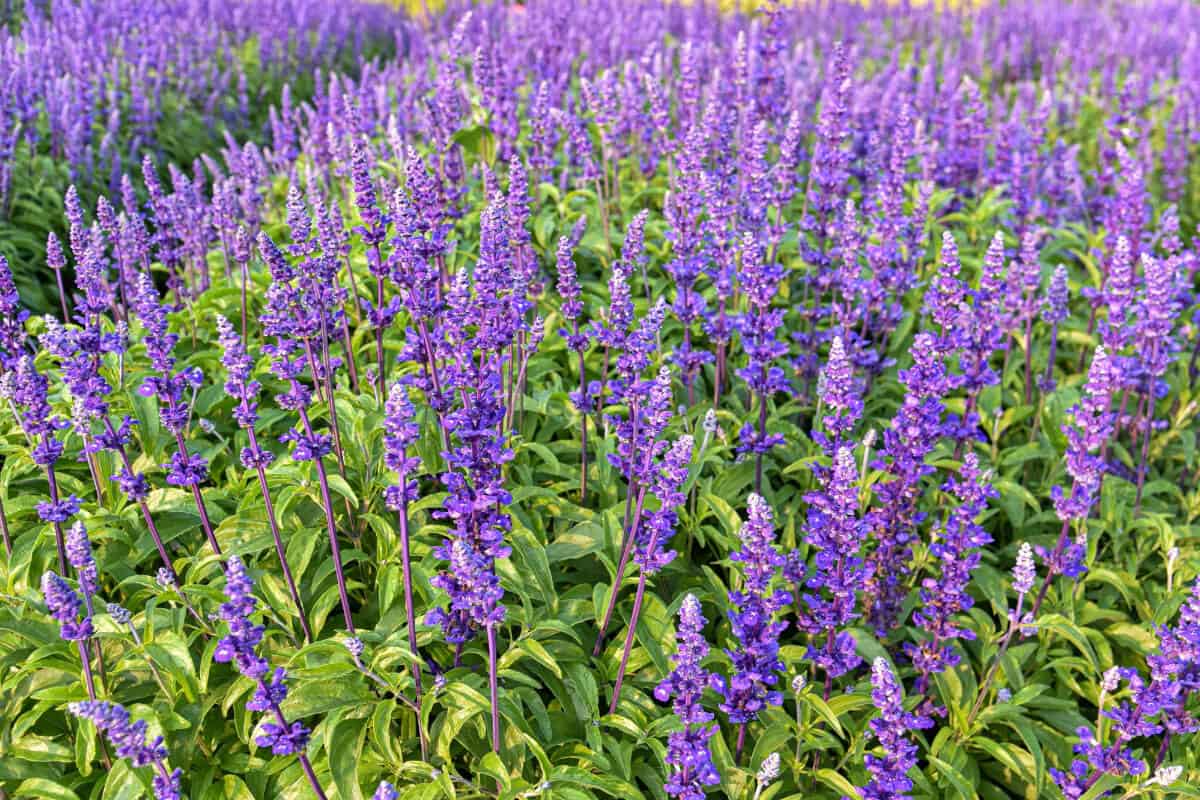
Caradonna Sage looks quite like May Night, only being different because of its flowers that are darker in color and with longer stalks.
It’s also about the same size as May Night, but it blooms later in the year, from June to September.
This variety prefers well-drained soil. It can also survive in moist, rich soil. It also thrives in full sun and can withstand dry conditions.
6. Crocus (Crocus Spp.)
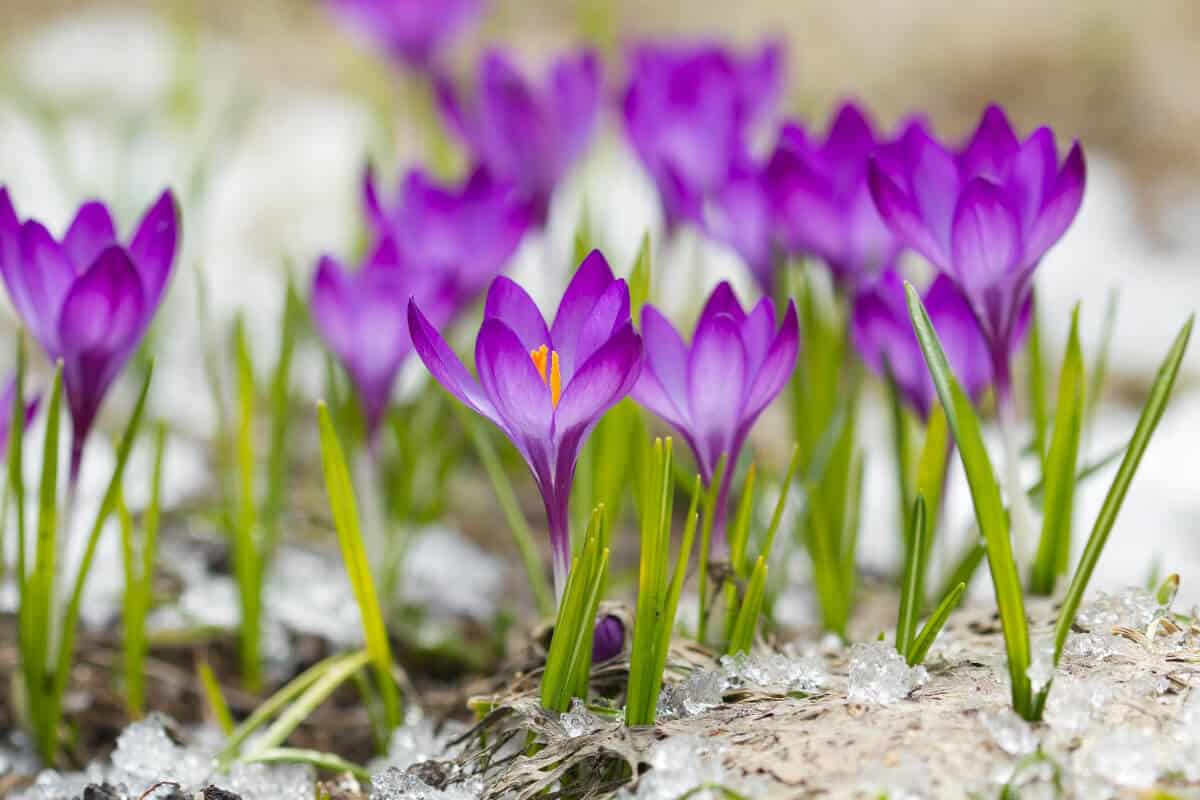
Crocuses are one of the first signs of spring, as it bloom as early as March.
They can be mistaken for simple grass because of its grass-like leaves, but these tiny plants can become truly remarkable when they produce their brightly-colored, star-shaped flowers.
These plants may be small, but they can attract plenty of insect pollinators, such as bees, thanks to their strong fragrance.
There are many species of crocuses in different colors—some of them in beautiful purple shades and blue.
These bulb plants need rich soil as they suffer in soggy soil, and need full sun.
7. Heliotrope (Heliotrope Spp.)
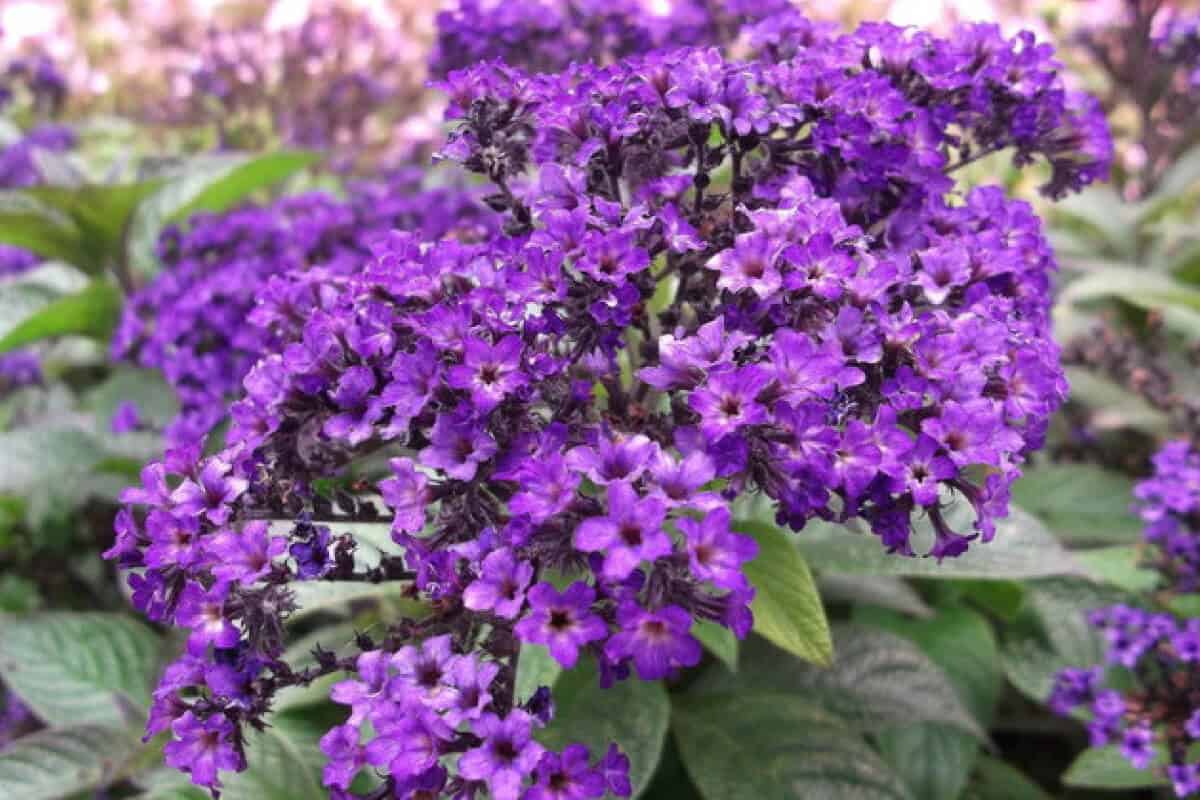
Heliotropes are plants that look like small shrubs and bear tiny, sweetly-scented flowers.
In the wild, they grow on sandy soil, typical of certain areas of South America.
The flowers bloom in the summer until the first frosts and their color ranges from lavender to deep shades of purple.
Heliotropes will attract plenty of butterflies, but they are toxic to people.
The key for them to thrive as cultivated plants are to keep its rich soil evenly moist.
8. Lamium (Lamium maculatum ‘Purple Dragon’, Lamium purpureum)
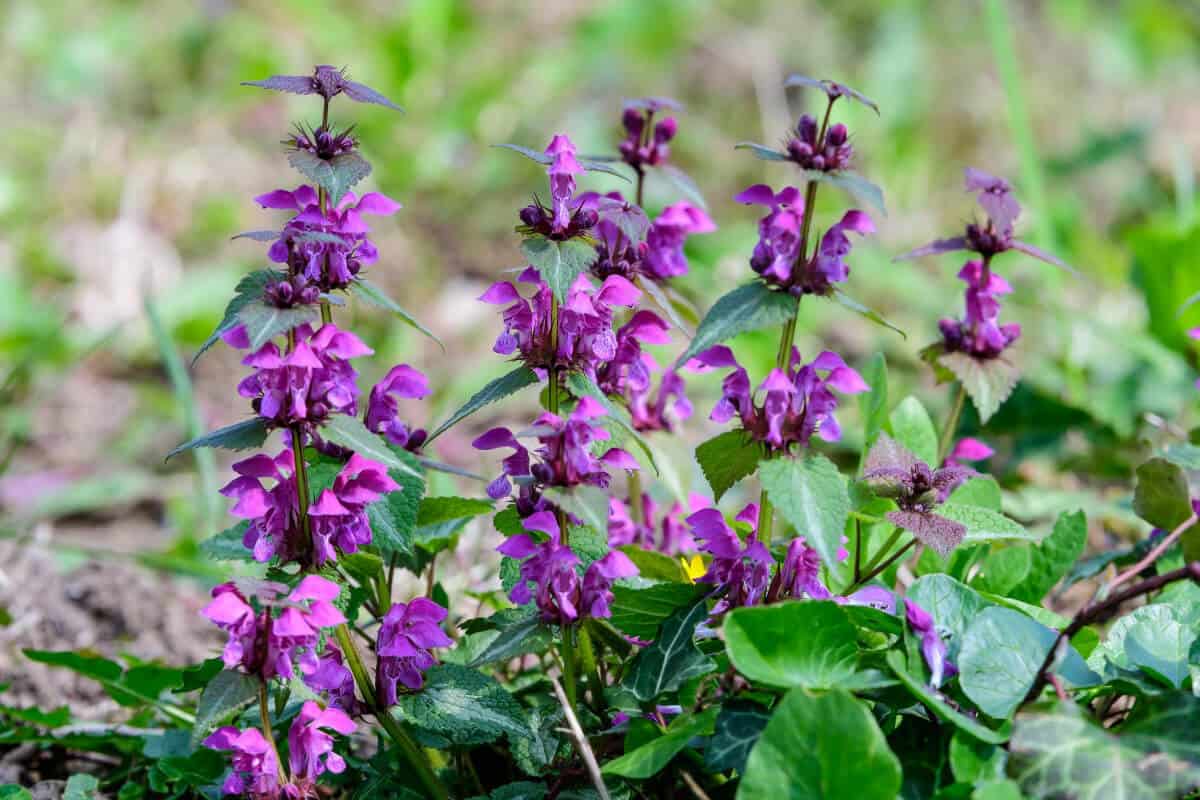
Lamium plants have tubular and colorful flowers borne on short, floral spikes that can be in different shades of, not only purple, but also pink, mauve, red, and white flowers.
The most beautiful cultivars with purple flowers are Lamium maculatum ‘Purple Dragon’ and Lamium purpureum.
The former has silvery-toothed leaves and light purple flowers, while the latter’s leaves and flowers are both a purplish color.
Lamium plants need partial shade and to be protected from direct sun and foot traffic.
9. Larkspur (Consolida ajacis)
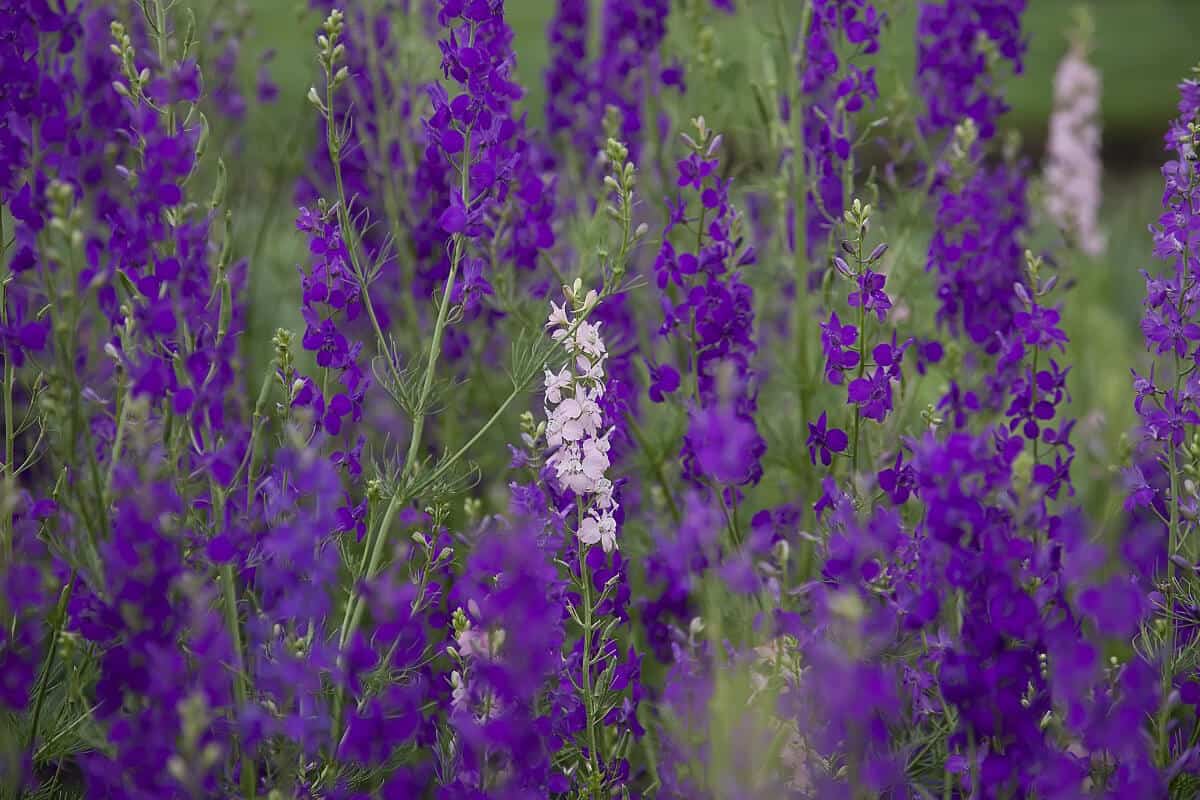
Larkspurs are tough annuals that grow quickly and self-seed efficiently, blooming year after year without needing to be planted again.
They are native to the Mediterranean. However, they tend to die out, in the hottest seasons, by mid-summer. In cooler climates, they last much longer.
The flowers are most commonly blue, but different cultivars have been developed in lavender and violet shades, as well as other colors.
The most common species is Consolida ajacis, commonly called Giant Larkspur.
10. Persian Onion (Allium hollandicum)
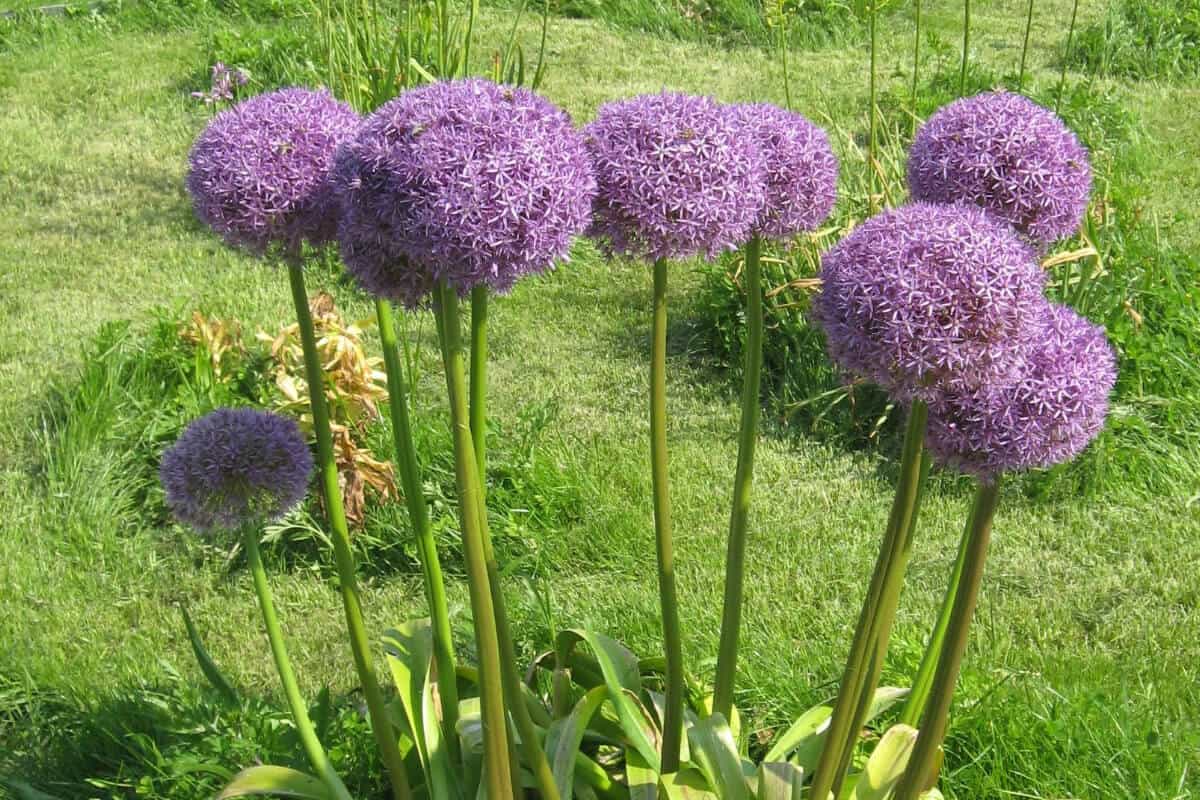
Also called Dutch Garlic, this Allium has become quite popular thanks to the deep purple color of its flowers. The cultivar Purple Sensation is particularly appreciated.
The Persian Onion needs to be planted in the fall as it blooms in early spring when, thanks to the high nectar content, it attracts plenty of pollinators.
Allium hollandicum should be placed in full sun and doesn’t need much water.
11. Jackman’s Clematis (Clematis ‘Jackmanii’)
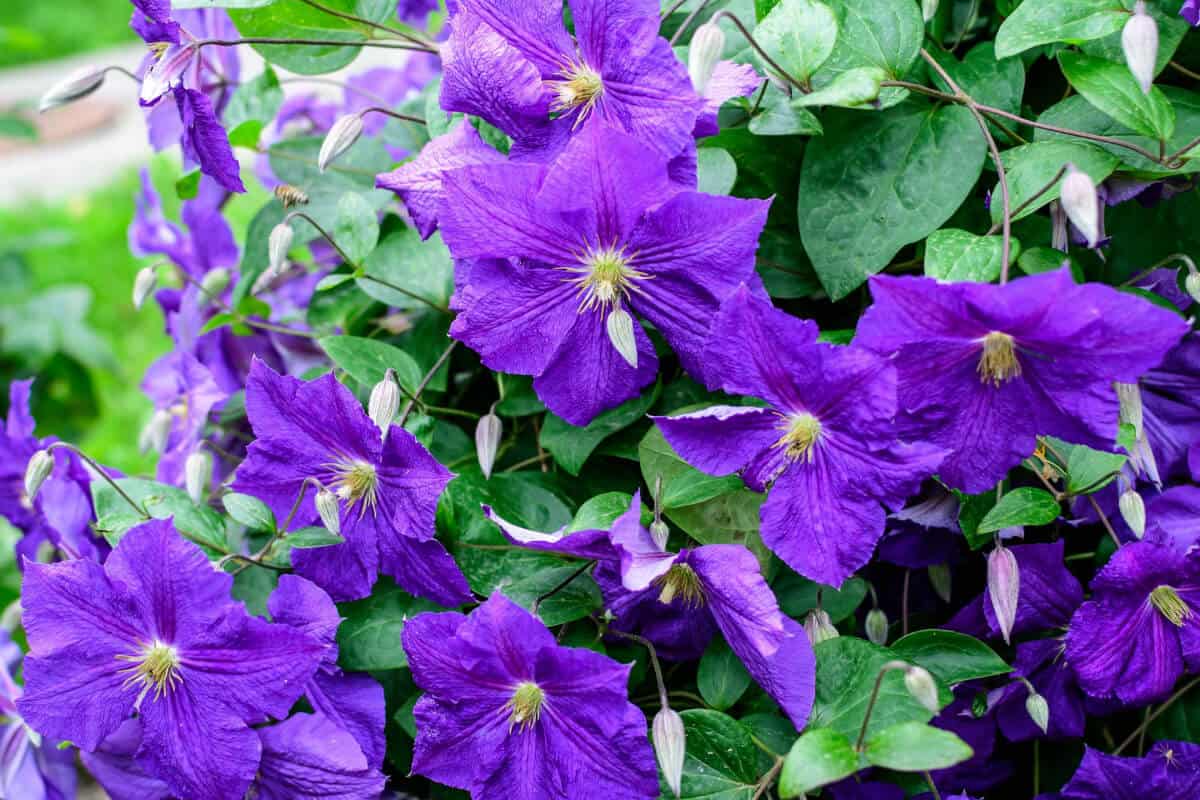
Jackman’s Clematis is a deciduous vine that is often used for trellis or to climb on walls or fences.
It grows incredibly quickly and produces large flowers of a deep purple color that fade to violet over time.
This vine blooms in mid-summer, from July to September.
Ideally, the leaves and flowers should be exposed to the sun for at least a few hours a day, while the roots should be kept in the shade. You can use other plants to achieve this, or you can use layers of mulch in the root area.
This Clematis will need to be pruned each year in the winter in order for it to flower again the following summer months.
12. Columbine (Aquilegia vulgaris)
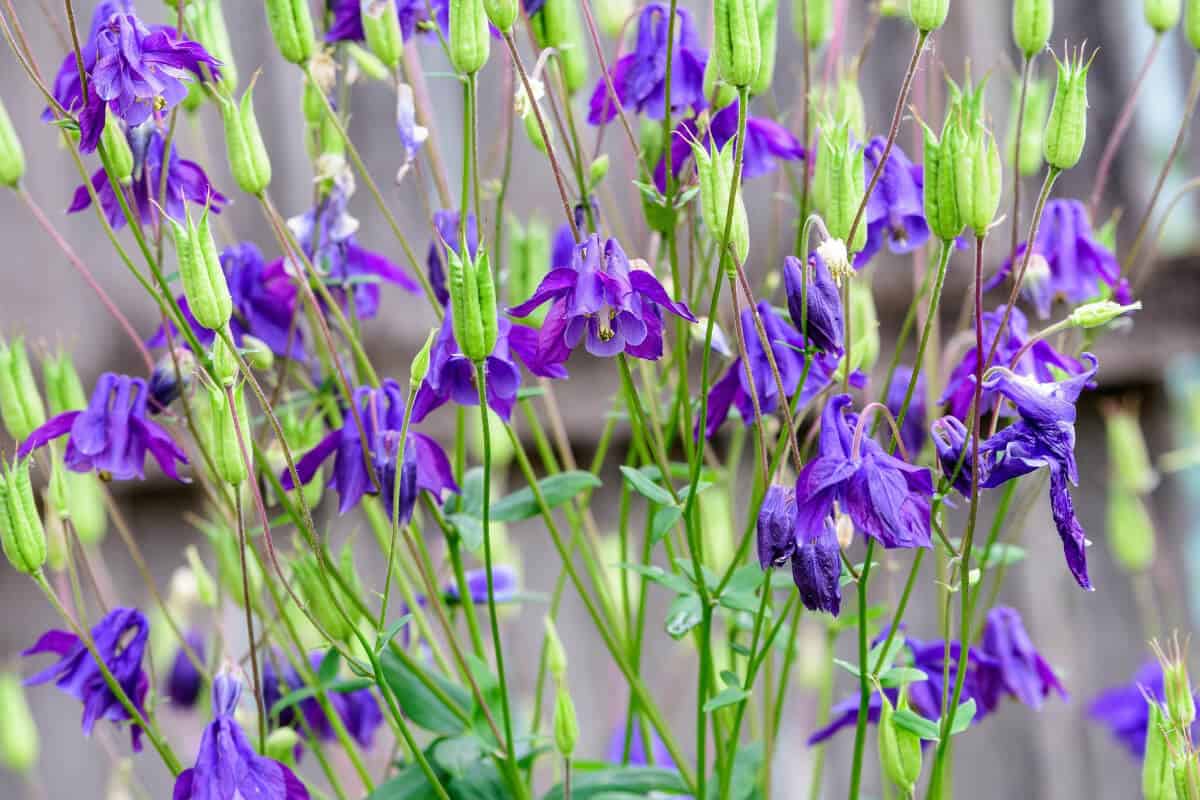
Derived from the wild variety of blue flowers, cultivated columbine plants come in many ranges of colors, such as blue, orange, pink, purple, red, white, and yellow.
These plants have delicate, bell-shaped, one-inch flowers and basal leaves with long stalks.
Columbine plants love the sun but suffer if the heat is excessive, so it’s a good idea to mulch the area around them or give them partial shade.
13. Lobelia (Lobelia erinus)
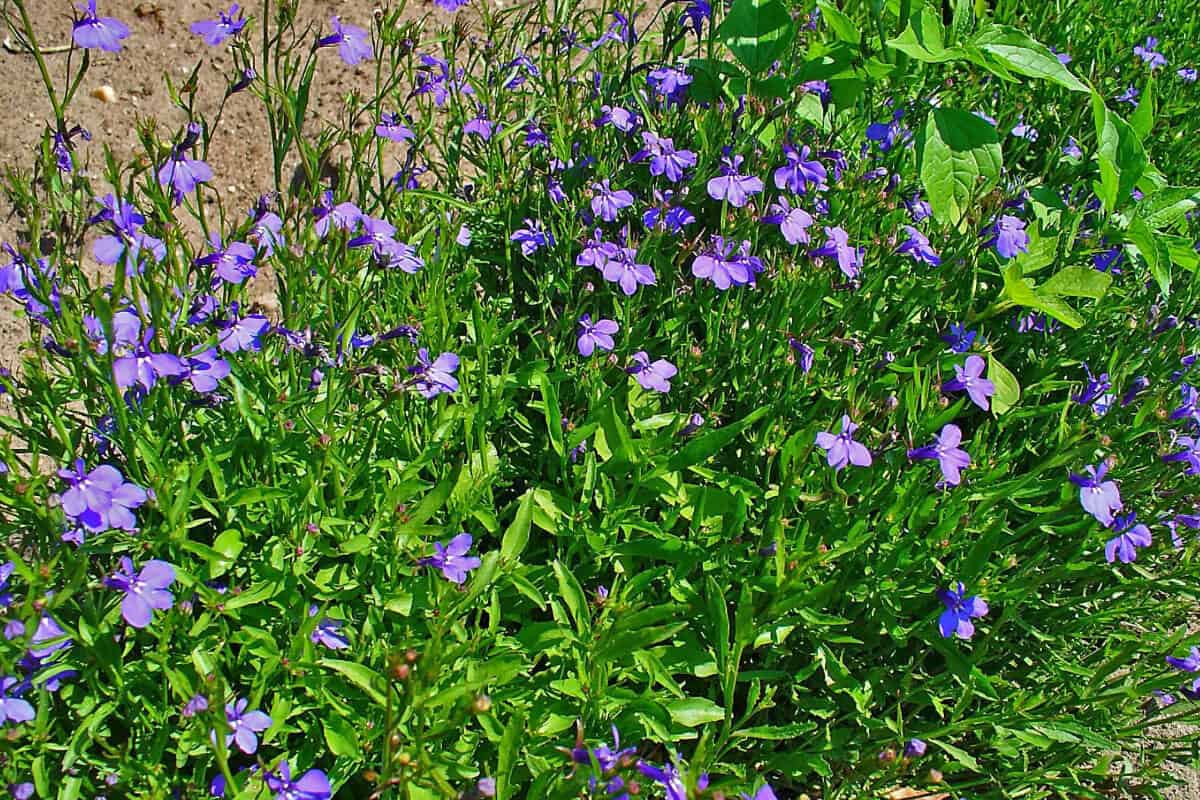
Lobelia plants come in many varieties, with Lobelia erinus being the one with the most beautiful trailing purple flowers.
Lobelia erinus is native to South Africa and is quite small with deep green leaves.
It blooms in the summer months and the flowers persist until the first frosts. It prefers cool areas with moist soil and partial shade and doesn’t need deadheading.
Lobelia flowers could suffer from the heat. In this case, they can be cut back to help them rejuvenate.
14. Morning Glory (Ipomoea purpurea)
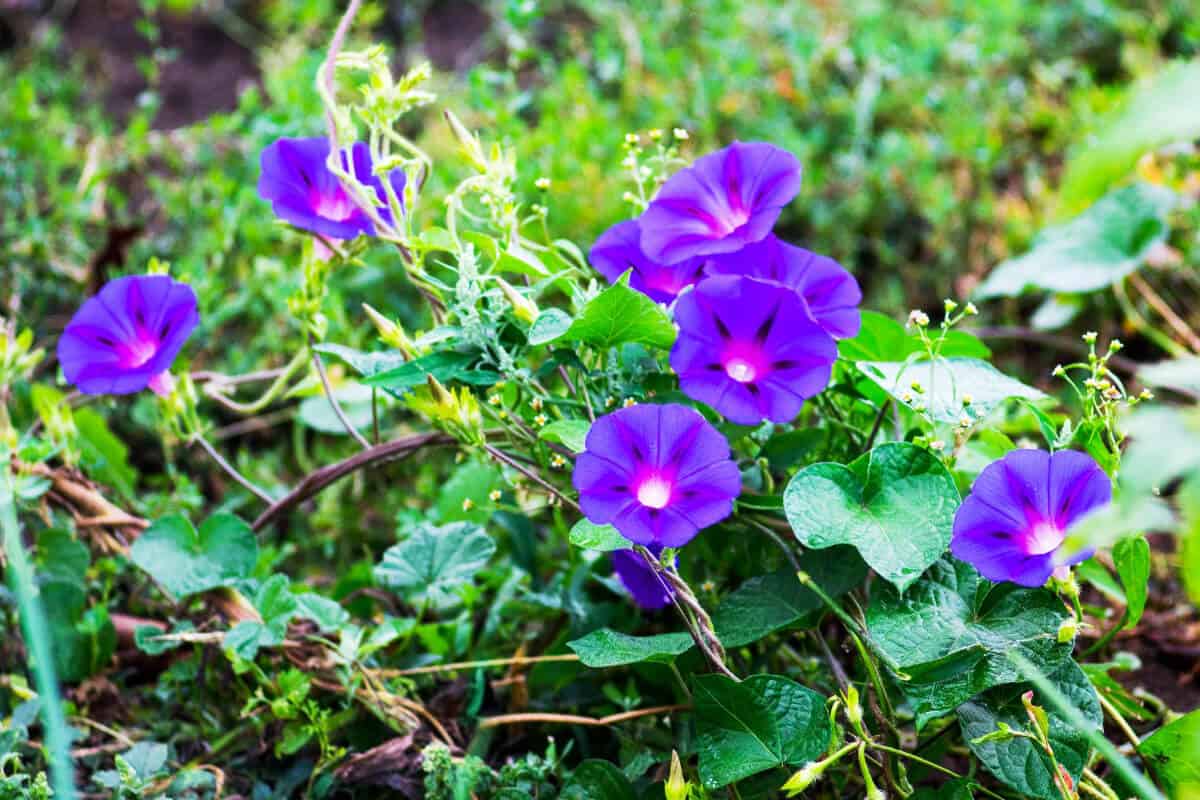
Morning Glory is a beautiful vine native to South America, which is very fast-growing and low-maintenance. These characteristics, paired with its violet-blue flowers and rich, green foliage, make it many gardeners’ favorite.
Ipomea’s common name derives from the fact that the trumpet-shaped flowers open in the morning and last for only a few hours.
Morning Glory can grow both along the ground or as a climbing vine and needs to be watered weekly.
15. Verbena (Verbena Spp.)
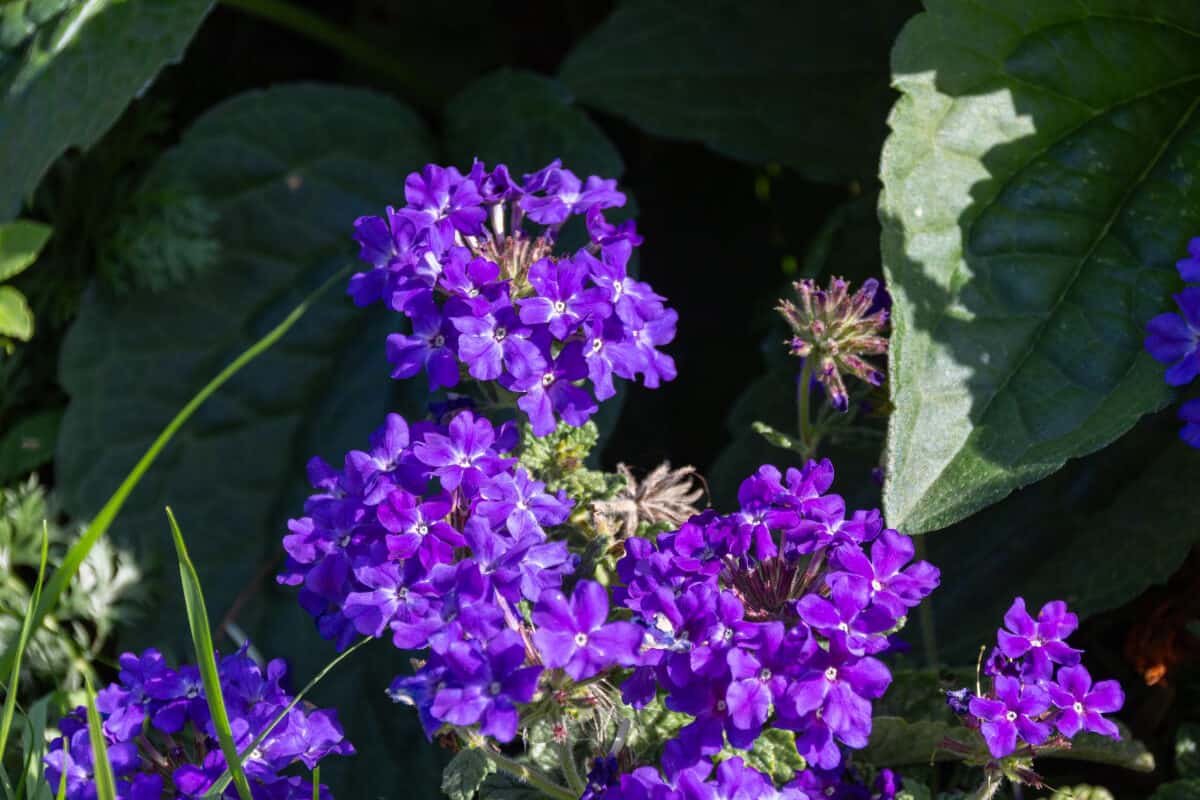
Verbena is a genus of annual flowers and perennial flowers, with tiny flowers that grow in clusters.
Verbenas tend to spread, taking up plenty of space, but they can also be kept at a more compact size through pruning.
There are over 250 species of verbena, and many of them have either flower that is in light shades of purple or dark purple flowers.
Verbena plants need full sun and well-drained soil.
16. Purple Ice Plant (Delosperma cooperi)
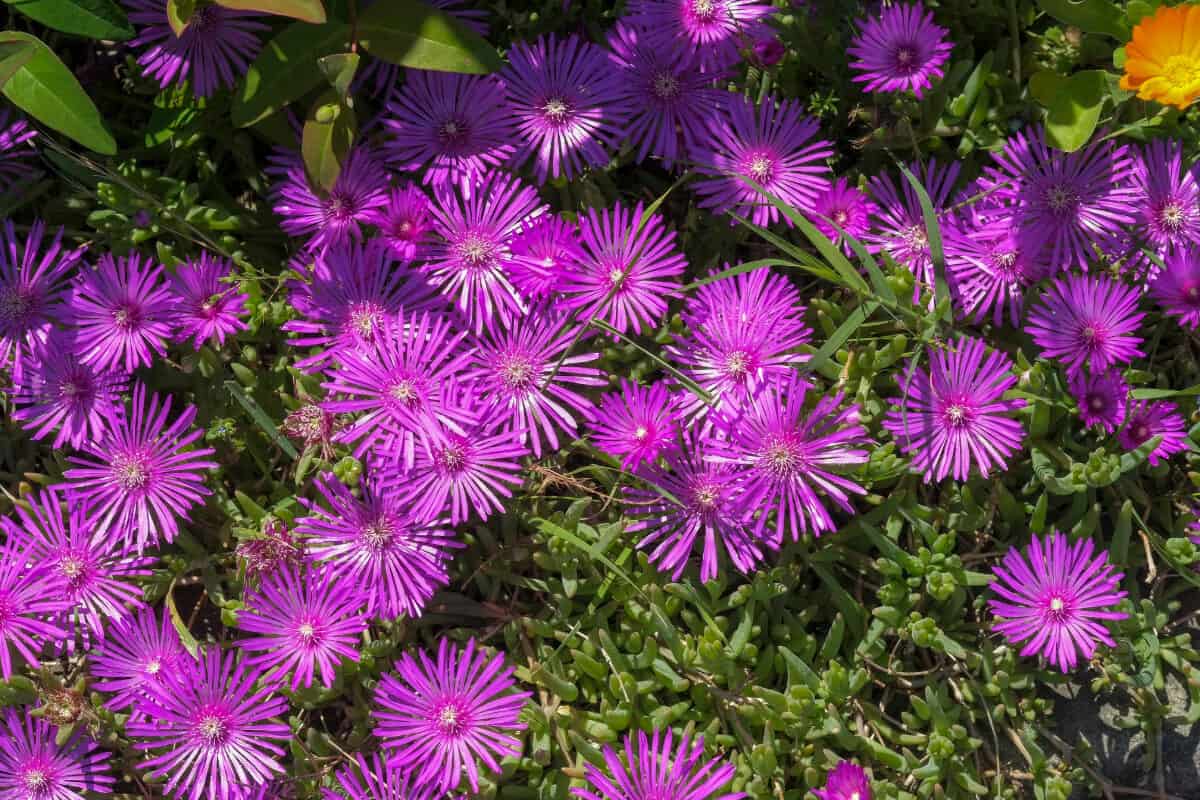
The Purple Ice plant, or Coopers Hardy Ice plant, is an excellent ground cover, thanks to its ease of growth and stunning colors.
The flowers bloom in the summer months and fall, and are large and magenta in color. Its green foliage is also beautiful, with its hairs that reflect the sun, giving the plant a sparkling appearance.
The Purple Ice plant fears soggy soil, requiring only dry soil, and also needs full sun.
17. Pacific Rhododendron (Rhododendron macrophyllum)
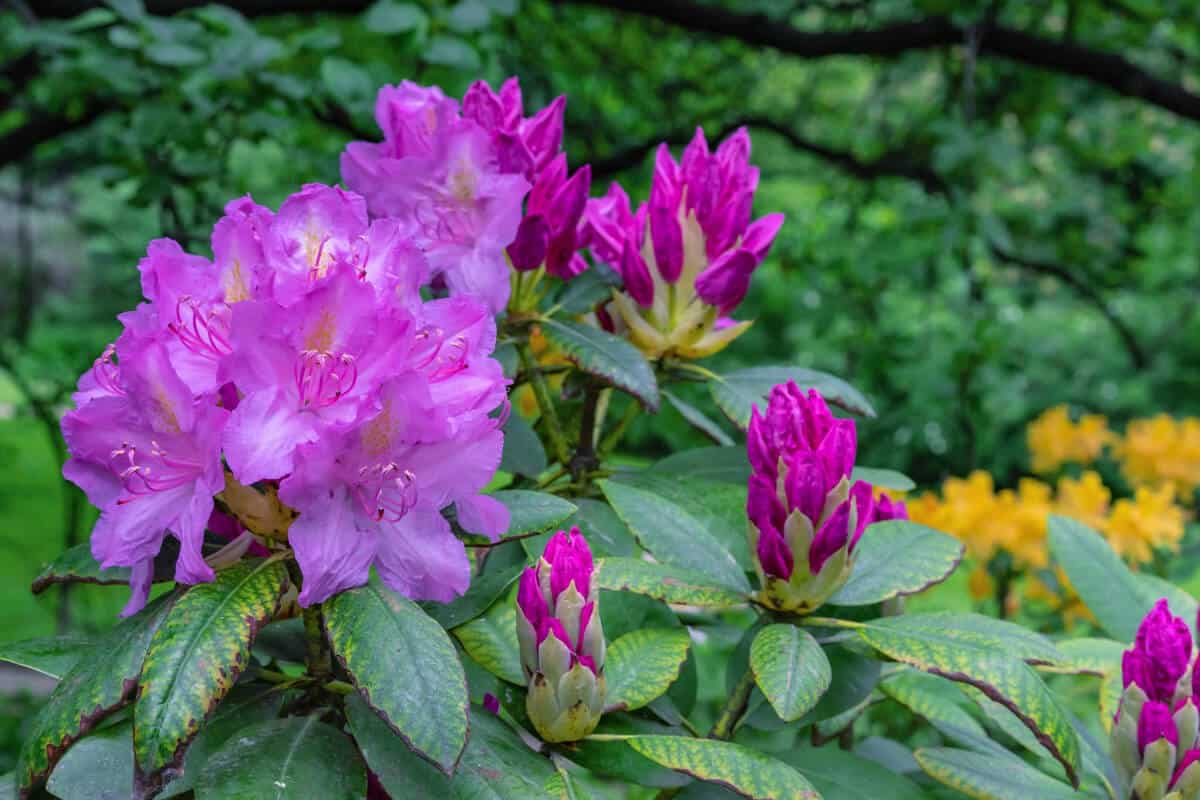
Pacific Rhododendrons are evergreen shrubs that are perfect to make the most of poor soils as they don’t need many nutrients.
In the spring and summer months, they are covered with bell-shaped flowers that can be pink or purple.
They are quite hardy, but you will need to provide its rich soil and even moisture to avoid them from drying or rotting.
18. Butterfly Bush (Buddleja davidii)
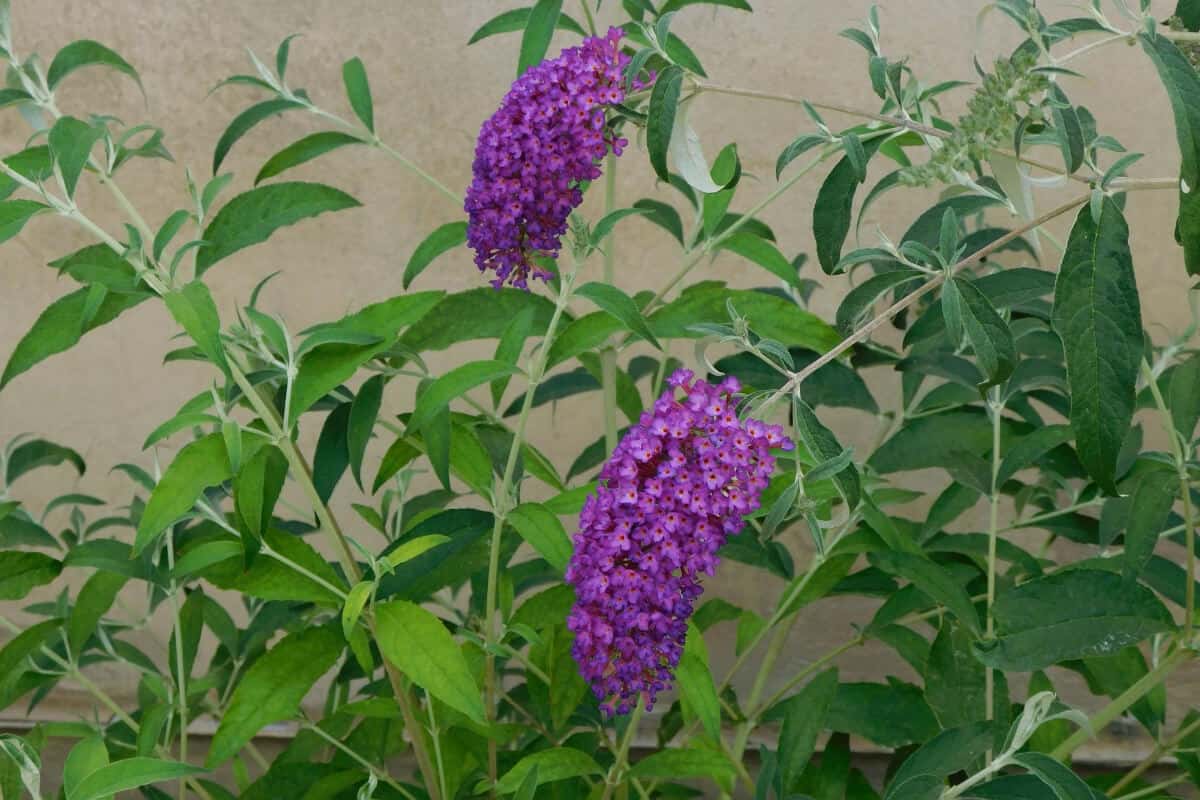
The Butterfly Bush gets its name because of the many butterflies it attracts, thanks to its sweet and brightly-colored flowers.
In some areas, this shrub is considered invasive as many cultivars spread very easily. Now, there are also varieties with sterile flowers.
In order to thrive, the Buddleja davidii needs full sun and well-draining soil, but other than that, it doesn’t have many requirements.
19. Bougainvillea (Bougainvillea Spp.)

Bougainvilleas are tropical vines that can work both as ground cover and for climbing up surfaces.
They are originally from Brazil but are now widespread in many countries.
In colder climates, they should be kept in the house or only grown during the summer, as they will die in freezing temperatures.
Bougainvillea blooms for months, and are much appreciated for its ability to produce flowers many times per season.
20. Blue Beard (Caryopteris × Clandonensis)
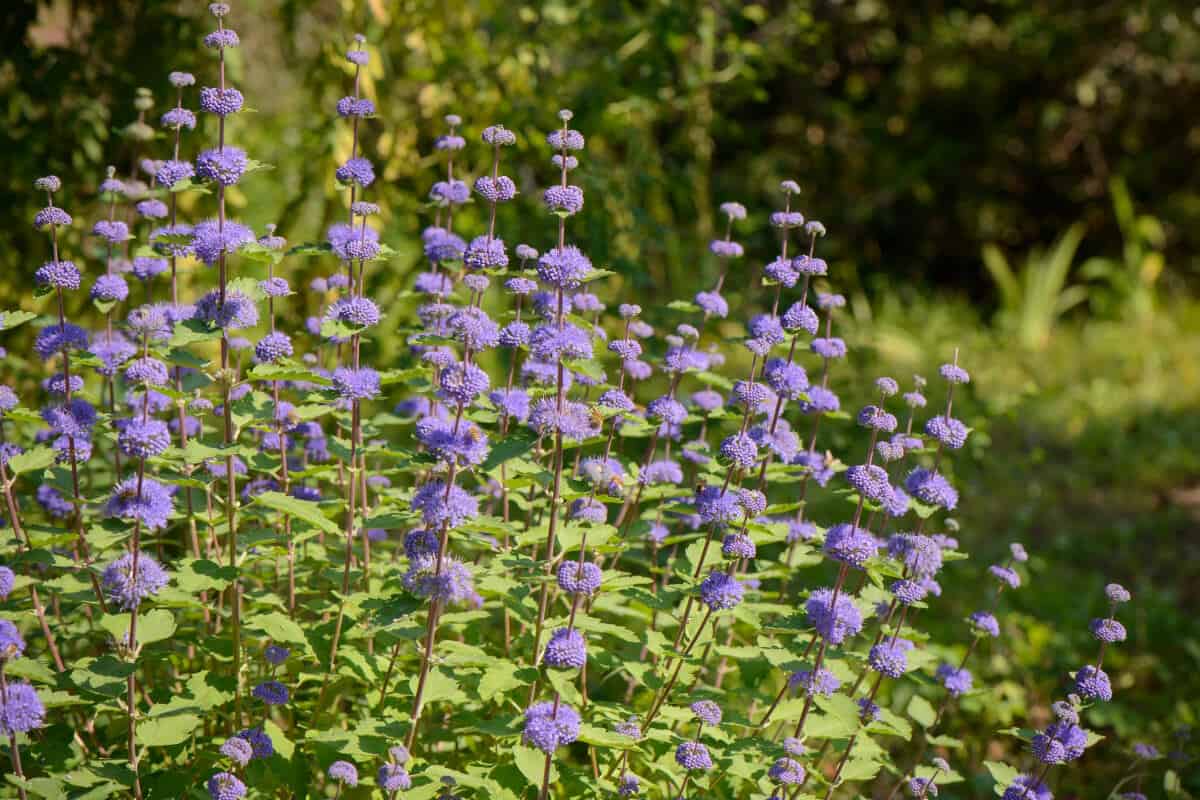
Blue Beard is a tiny shrub with aromatic leaves and small flowers. These are violet-blue in color and they bloom in the late summer months.
Another name for this plant is Blue Mist, and that’s because of its cloud-like appearance when covered in flowers.
The roots will survive even the coldest winters so that even if the stems are damaged, the plants can be pruned in the spring and will bloom again.
Blue Beards need full sun and they can tolerate drought but not soggy, rich soil.
21. Delphinium (Delphinium ‘Black Knight’)
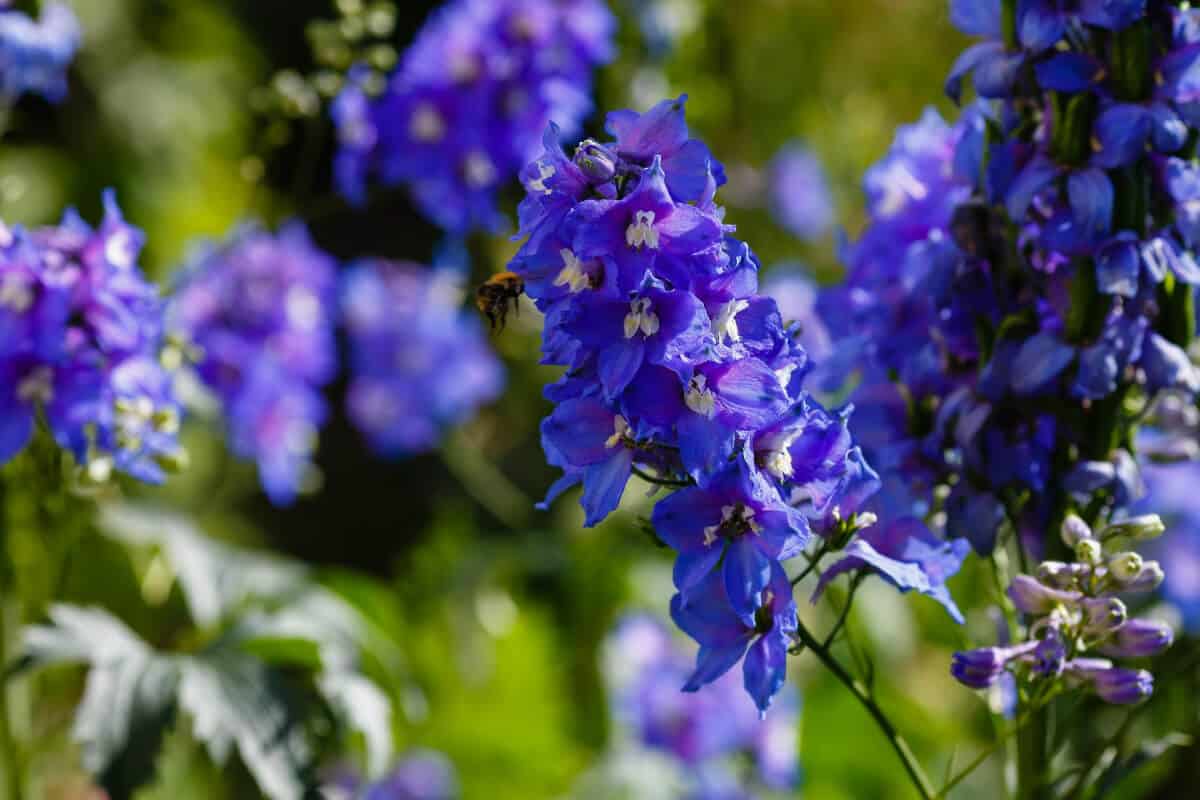
Delphiniums are perennial plants that only live 3 or 4 years, and can be 8 feet tall.
Under the right conditions, they can bloom twice a year: once in June or July, and another time in the fall.
Delphiniums have floral spikes, which are tall and tight spikes, that stand out in any garden.
Despite being well-known for their sapphire-blue colors, some cultivars also have purple flowers, such as the ‘Black Knight’.
Final Thoughts on Plants With Purple Flowers
If you’re looking to add a pop of color and depth to your landscape, then these plants with purple and lavender flowers are the perfectly-enchanting and vibrant addition you need!
What made these purple plants a really popular choice for gardeners of all levels are its versatility, adaptability, and low-maintenance needs.
Whether you’re looking to attract pollinators, create a calming environment, or simply add some visual appeal to your outdoor space or rock gardens, there’s undoubtedly a purple-flowered plant that will suit your needs.
With so many varieties to choose from, you can mix and match different shades, and blend them with a wide array of colors, textures, and sizes to create a stunning and unique floral display!
Learn more about flowers for your garden by checking these articles out:

